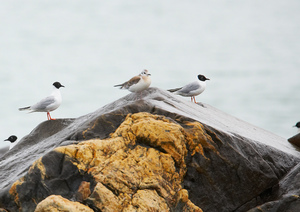
|
| ©Unknown |
Scientists at the Norwegian Polar Institute reported Thursday that the tiny Arctic ivory gull has the highest known concentrations of PCBs, chemicals long used in the pesticide DDT along with plastics, paints and other products.
The gull has set a new record as the bird most contaminated by the two prohibited toxins, the scientists said.
There are currently about 14,000 ivory gulls, which inhabit areas from Canada to Siberia. The current research was conducted following reports that the number of ivory gulls had plummeted 80 percent in Canada.
"Environmental poisons are threatening ivory gulls," the Institute said in a statement, referring to eggs gathered off northern Norway and Russia.
"Levels of PCB and DDT are higher in ivory gulls than in other Arctic seabirds."
PCBs are swept north from industrial centers by currents and prevailing winds. The long-lasting chemicals often end up in the Arctic, where they accumulate in fatty tissues of fish, birds and animals.
In 2001, a United Nations convention banned most uses of a dozen persistent organic toxins after the pollutants were discovered in polar bears and in the breast milk of Inuit women. Levels of the prohibited contaminants have been declining since that time.
"Ivory gulls are top predators, that's a main reason why they have high levels of contaminants," the Polar Institute's Hallvard Stroem told Reuters.
The gulls consume a fat-charged diet, including fatty fish, dead seals and polar bears.
"We're not sure why the levels are higher than for other birds," Stroem told Reuters.
There were no known local sources of the toxins to account for the high level of concentrations, he said.
The levels of PCBs discovered in the eggs, up to 0.2 percent of the egg, were comparable with those found in some polar bears two decades ago.
Previous research has shown that PCBs can thin the eggshells and shorten the lifespan of birds, which for the Ivory gulls is typically between 10 to 20 years.
The recent shrinking of Arctic sea ice also endangers the birds by reducing the size of their habitat. The birds feed primarily on fish and plankton, which abound in the fringes of the ice.
"Climate change is an added stress -- the ivory gull is dependent on the sea ice," said Stroem.



Reader Comments
to our Newsletter